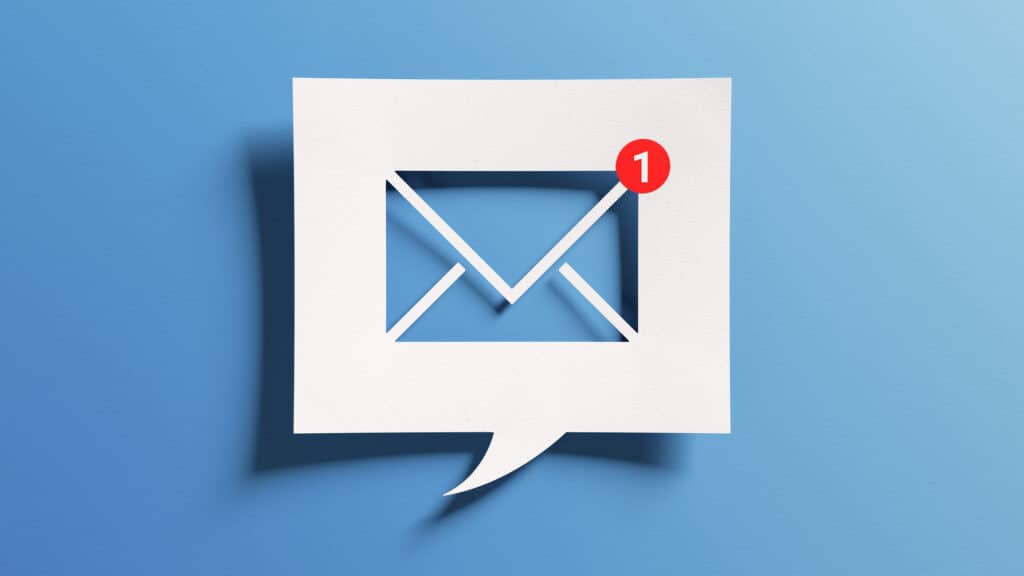Once businesses realized email was a viable alternative to cold calling, they didn’t look back. Now marketing emails are so common that many recipients ignore or delete them. The initial challenge for email marketing used to be deliverability. These days, it’s beating the competition and overcoming email fatigue. This means that you need great email subject lines if you want to get past all of that digital noise.
How do you write ones that will get people to actually open your emails? Here are a few factors to keep in mind.
Email Subject Lines Depend on Your Audience
Are you writing to cold leads, warm leads, or prospects (those who are ready to close)? The level of familiarity leads have with your business will influence the email subject lines you’ll want to craft.
Cold Emails
If leads are so new that they’ve never heard from you (or only recently heard from you), then you’ll want to use cold email subject lines that are written like one-on-one discussions.
Think about examples like,
Can you help me with [x]?
Question about [y]
Did you need more [z]?
These will encourage leads to look at you as an individual who is interested in their help, rather than someone who’s just trying to sell to them.
Warm Emails
Warm leads are those who have heard from you enough times to know who you are and what you offer. Besides direct responses, you can tell when leads are “warming up” by measuring how often they’re engaging with your emails — i.e. opening them, clicking on links, and visiting your website. (Below we discuss software suggestions that can help you with this.)
Generally speaking, these leads should also receive emails with subject lines that mirror cold outreach’s conversational style, but with a little more urgency.
For instance,
Checking back about [x]
Did you have time to think about [y]?
Follow-up re: [z]
Prospecting Emails
Prospects are those leads that are pretty much on the edge of buying from you, and should be in direct conversations with your sales team. Chances are that you won’t have to worry too much about those subject lines, but we can still offer a few examples that you might model yours after:
Do you have questions about our proposal?
Did you get a chance to look at your quote?
When would you like to start services?
Content Email Subject Lines Are a Little Different
When developing your database of leads, there will be a good portion of warm leads who still need time to decide you’re the right fit, but who won’t need the same urgency of a “checking back” kind of message.
That’s where content emails will serve you best. These provide your leads with information that applies to their industry, establishes your authority in it, and keeps your name on their radar until they’re ready to buy.
Content emails tend to have more information than the follow-up format of warm emails, while often ending with calls to action. They may also utilize backlinks to your website or third-party sources to lend credibility and prompt leads to learn more about you.
Content email subject lines try to offer value while encouraging your leads to take some sort of action, and can even be a bit more salesy depending on your audience.
Have you been affected by [x]?
Check out your exclusive offer for [y]
This is the reason you’re having trouble with [z]
Because they’re being sent to leads who should now be used to hearing from you (or whose inboxes at least recognize that you aren’t spam), content emails don’t have to be as minimal as follow-ups. Along with backlinks, they can include banners or promotional images, although these aren’t required.
Types of Subject Lines
Besides grouping emails by the audience types above, you can also categorize them by their intent.
Maybe you have leads that are so engaged that you’re sending them newsletters or special promotions, and you need subject lines to reflect that. Or maybe you have subject lines that are highly personalized and autofill first names or company names of the leads you’re sending to. They may touch on pain points your leads are experiencing (Are you dealing with [x]?), or be used as part of retargeting to try and get them to reengage with your services (Were you still interested in trying [y]?).
You may decide to write catchy email subject lines that hook your audience with clever observations. Or you may try to use humor and jokes — although this strategy is arguably problematic, depending on how people interpret what you’ve written.
Maybe your goal is curiosity, or to create even greater urgency by making your leads fear that they’re missing something monumentally important.
Suffice it to say, you’ve got plenty of angles to try and develop your best email subject lines. You just have to weigh those options against your industry and the material you want to share.
What Email Subject Lines Have To Do
The job of a subject line isn’t easy. As we already mentioned, there’s a lot of competition out there for inbox space. Plus, it’s easier for people to simply ignore your emails. To stand out, subject lines have to find a balance between the following:
- They shouldn’t look like impersonal sales. You want catchy email subject lines, but not something that looks like it’s part of a mass email. This is especially important for the first few emails that you send cold leads, because their inboxes are more likely to file those messages in their spam folders. If your emails get through but leads still think you’re spam because of subject lines, they could manually report you and increase your risk of getting blacklisted — and that’s a whole other issue you don’t want to deal with.
- They should abide by the CAN-SPAM Act. This means that your subject lines should accurately reflect the content of your emails. They shouldn’t be misleading.
- They shouldn’t give away the whole show. While it’s good to be honest about what’s in the bodies of your emails, you don’t want your subject lines to completely summarize them. Otherwise, it’s easier for leads to immediately dismiss you, rather than feel interested to learn more.
- They shouldn’t be bland. Some subject lines avoid sales so much that they simply look boring. Options like “Checking up,” “Updates for [x],” or “Plan for [y]” may seem harmless, but they’re also easier to overlook. A lack of urgency can mean that your leads will prioritize other emails and forget about yours.
- They should be timely. When your subject lines consistently show up in inboxes, the more likely leads will remember your name when the need is there.
- They should use the appropriate coding. Personalizing your email subject lines can be beneficial, as long as the code that autofills names does so correctly. In other words, you want the version that goes “Check out these deals, Jane!” instead of “Check out these deals, >>first_name<<!”
Learn From Emails That Underperform
While email is important to take seriously, it shouldn’t be a make-or-break decision with every campaign that you send. Don’t spend hours nitpicking over every detail of your messaging, because only a handful of people will open or retain each one. The key is to be relevant and persistent in your outreach. As long as you’re sending appropriate, truthful messages to the correct audience — and you promptly unsubscribe people who tell you they’d rather not hear from you — then you’re taking the right approach to email marketing.
Will every email be a resounding success? Of course not. Even great subject lines can fall flat if the timing isn’t right, or the product/service/overall message doesn’t resonate.
Don’t lose faith when some of your emails don’t pan out. Learn from them and try different tactics next time. There will always be another email, which means there will always be another opportunity to do better.
Tools To Help With Email
Here are a few digital tools you may consider using to help you create emails and analyze performance.
Ominsend offers a free email subject line tool that gives feedback on helpful or harmful words, words that could get you flagged for spam, and whether you’re reaching an optimal word and character count. You can also see a visual representation of how your email subject line is likely to display on versions for desktop versus mobile devices.
There is no shortage of CRM solutions that offer automation platforms for sending to email lists. HubSpot and Constant Contact (formerly SharpSpring) are two examples. Both offer intuitive user interfaces for email creation, A/B testing to compare subject lines, and reporting features that help you review email open rates, click rates, and website visits. Using these platforms or those like them can help you analyze your email performance and see which subject lines have better pull. It’s worth noting that higher open rates used to be the litmus test for good subject lines, but click-to-open rates may now be the more reliable metric. (To learn more about CTORs, click here.) Pricing for email automation services can vary based on company.
If you want to make sure your emails aren’t coming across as too spammy, check it for free with mail-tester. Their service provides an email address to send your test copy, then generates a full report on the factors it identifies as aiding or hindering delivery.
Would You Like Help With Your Email Campaigns?
Do you want more leads reading your emails? We want to hear from you! Click the link below to schedule a free marketing consultation.





